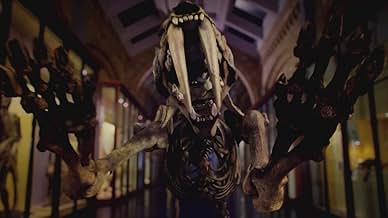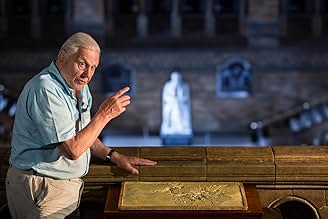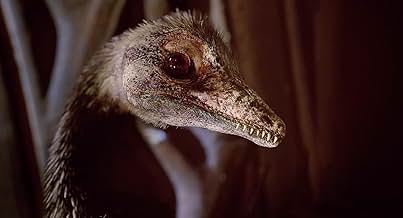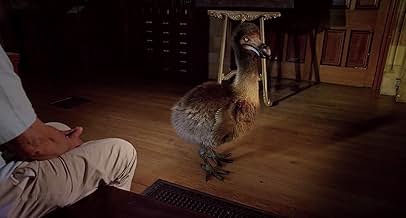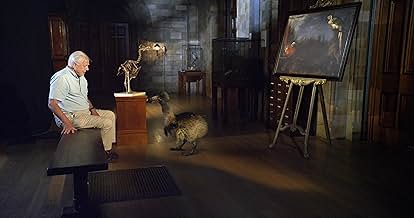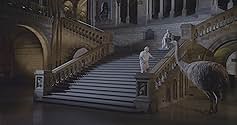This documentary narrated by David Attenborough was filmed at the Natural History Museum, London, and uses state of the art CGI imagery to bring to life several extinct animals in the museum... Read allThis documentary narrated by David Attenborough was filmed at the Natural History Museum, London, and uses state of the art CGI imagery to bring to life several extinct animals in the museum, including Archaeoptery, the Moa Ratite bird (Dinornis) and Haast's eagle. The documentar... Read allThis documentary narrated by David Attenborough was filmed at the Natural History Museum, London, and uses state of the art CGI imagery to bring to life several extinct animals in the museum, including Archaeoptery, the Moa Ratite bird (Dinornis) and Haast's eagle. The documentary was well-received, and won a TV BAFTA in the specialist factual category.
- Director
- Writer
- Star
- Won 1 BAFTA Award
- 1 win & 1 nomination total
- Director
- Writer
- All cast & crew
- Production, box office & more at IMDbPro
Featured reviews
It is really hard picking favourites, let alone a definite favourite, among what Attenborough has done because he has done so many gems, it is the equivalent of trying to choose your favourite ice cream flavour or your favourite operatic role (for examples) and finding you can't pick. 'David Attenborough's Natural History Museum Alive' is yet another wonderful effort from him, can the man do any wrong? My one minor complaint is that there could have been a little more of the scenes in the museum and the skeletons of the extinct creatures in action and a little less of the making of series (still very interesting if not as illuminating). 'David Attenborough's Natural History Museum Alive' may not be one of the best or most ground-breaking of his work, but when it comes to entertainment value and accessibility for all ages it is right up there and the concept for Attenborough is a unique one.
As always with Attenborough's work, it looks wonderful visually. is gorgeously filmed, done in a completely fluid and natural, sometimes intimate way and some of it has a cinematic quality. The editing is always succinct and smooth and the Museum setting leaves one in wonder and is just as fascinating as the information given.
CGI is excellent, adding to the experience instead of distracting. Special effects for skeletons have rarely been more vivid. A perfect example of how CGI has advanced significantly over-time when done and used well like here. Only, as mentioned in the goofs section, the incorrect modelling of the diplodocus' feet disappoints a little but this is a nit-pick. The shorter 3D version is also well worth checking out, the 3D also is done to a very impressive standard and doesn't feel pointless. It's not just how the effects look, they also have personality that allows one to care for them in the same way as one would for a human.
Music fits very well, never overly grandiose while never being inappropriate while also being a beautiful score in its own right.
Even if not ground-breaking in terms of information and subject, what we are told is incredibly informative and really entertains. The science is not dumbed down, a potential danger when trying to appeal to a younger audience. In terms of the facts there was a very good mix of the known ones and the unknown.
Attenborough's contribution as always helps quite a bit. He clearly knows his stuff and knows what to say and how to say it. He delivers it with his usual richness, soft-spoken enthusiasm and sincerity, never talking down to the viewer and keeping them riveted and wanting to know more.
In conclusion, not one of Attenborough's best but still delivers, which says a lot about how good his work is and how good a presenter/narrator he is. 9/10 Bethany Cox
This nicely put-together documentary extravaganza gives us a better insight into the expansive range of the numerous, fossilised skeletal specimens (both famous and obscure species) which the massive museum houses in its highly secured, archival storage vaults. For the most part, I thought the photorealistic-CGI reconstructions (used to portray the different types of extinct animals as they may have once acted in real-life) were alright for the majority of the runtime, even if they're a tad bit unconvincing at certain points (I assume it must've probably been something to do with having a few awkward camera angles here and there, making the computer-generated visual effects look a bit off at times).
Honestly, it's not the number one best documentary Attenborough's ever done and I don't really find it to be all that 100% interesting as I do with some of his other 3D-produced programmes; like for instance, the ones where he explores the beautiful Galapagos Islands and talks about the micro-ecosystems dominated by Monster Insects. However, if you want to see him doing something that's a little bit different to what he normally does when he's out in the wilderness hosting as a proper wildlife presenter, then I'd suggest you check this out just to satisfy your own mild curiosity. If it's any consolation, I at least found it to be more entertaining to watch than I did with Werner Herzog's critically-acclaimed Cave of Forgotten Dreams (2010) which, coincidentally, also went through the 3D process.
Throughout the documentary Attenborough takes us around the museum, highlighting fossils of extinct animals from the museum's collection and explaining their history and how they came to be at the museum. These fossils then come to life with CGI, allowing us to see what they would have looked like and how they would have behaved in addition to giving us some humorous scenes of David interacting with the extinct animals.
This is a fun format that not only teaches us a lot about the animals and their fossils but also allows us to see them in motion as if they were alive today. The documentary is a must-watch for those interested in natural history or the Natural History Museum in particular, especially if like me you have been visiting the museum for many years. I discovered this documentary years after it originally aired but it still holds up incredibly well.
Did you know
- GoofsRight after sir Attenborough says "we've got a pretty good idea of what it looked like" regarding the dinosaur Diplodocus, it cuts to a closeup of its front feet, which are modeled incorrectly. They are flat and stocky, with the whole "palm" resting on the ground, and it has five claws. In reality, Diplodocus' feet were slender, tall and C-shaped in cross-section because they only stood on the tips of their toes. And all but the innermost toe lacked any sort of claw or hoof.
- Quotes
David Attenborough: I wonder if he realizes that his dinner tonight is a fiberglass model.
Details
- Release date
- Country of origin
- Official site
- Language
- Also known as
- Музей естественной истории с Дэвидом Аттенборо
- Filming locations
- Production companies
- See more company credits at IMDbPro
Box office
- Gross worldwide
- $557,929
- Runtime1 hour 4 minutes
- Color
- Aspect ratio
- 1.78 : 1 / (high definition)
Contribute to this page



